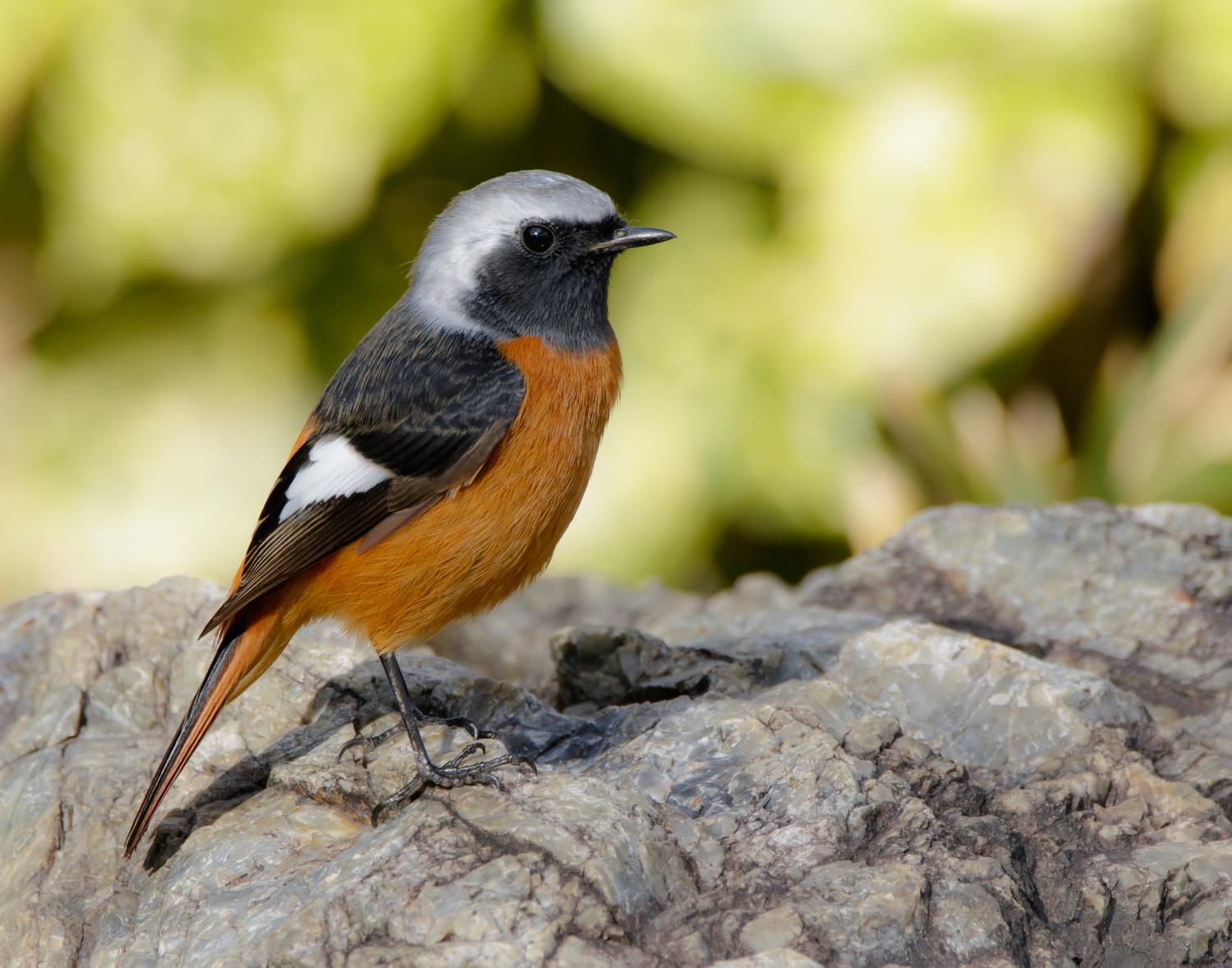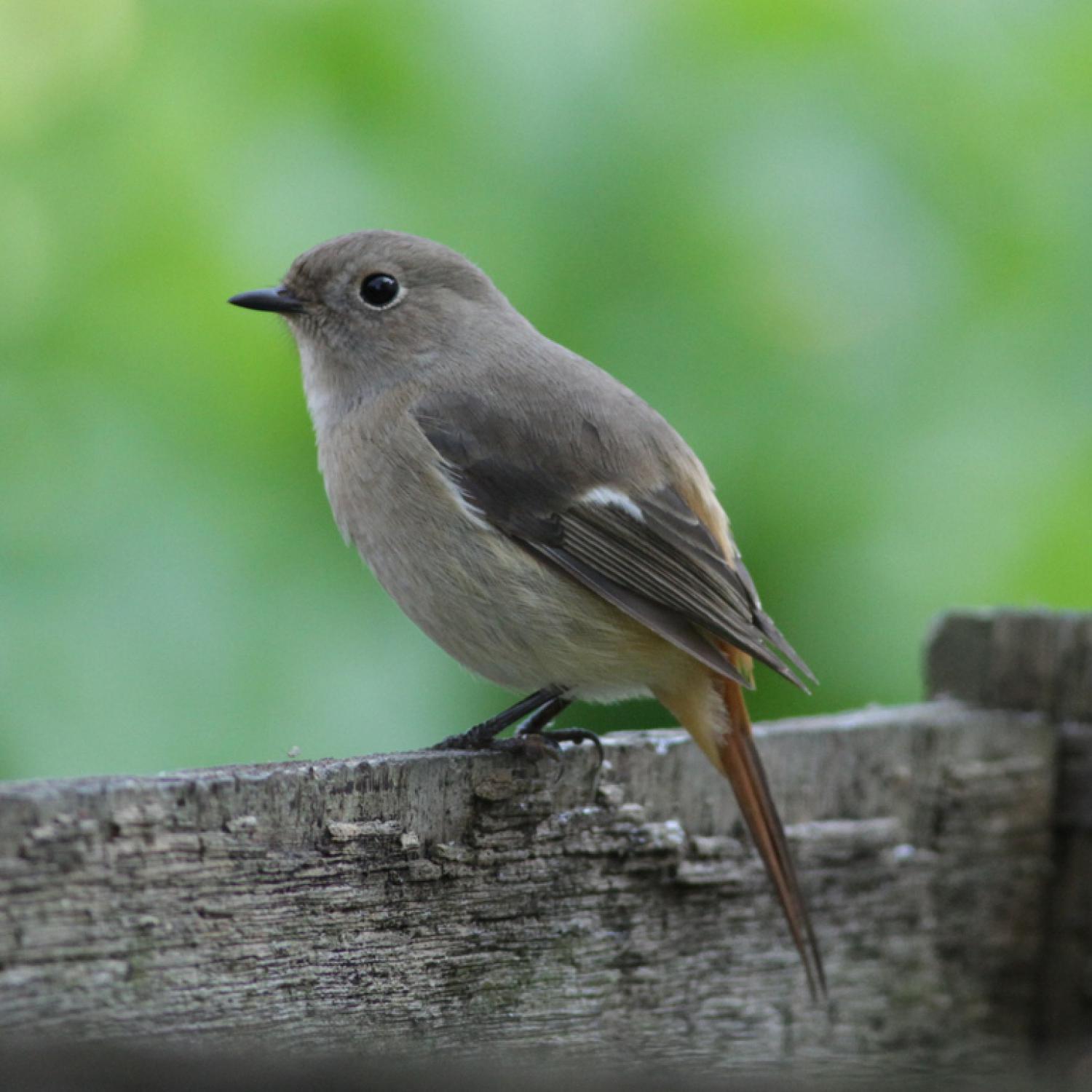Species of Thailand
Daurian redstart
Phoenicurus auroreus
Peter Simon Pallas, 1776
In Thai: นกเขนท้องแดง
The Daurian redstart (Phoenicurus auroreus) is a small passerine bird from temperate Asia. In Japan, it is known as jōbitaki (ジョウビタキ). The species was first described by Peter Simon Pallas in 1776.
Description and systematics
Its length is 14 to 15 cm and its weight is 11 to 20 g.
Like all typical redstarts, they are strongly sexually dimorphic. Breeding males have a grey crown and nape with lighter forehead and crown-sides, a black face and chin, brownish mantle and wings and a large white wing patch; the chest, lower back and rump are orange, and the tail is black with orange sides. Juvenile males are similarly patterned but much duller and less clearly marked.
Females are warm brown above, paler below, have an orange rump and tail sides, and have a large white wing patch similar to the males. Bill, eye, legs and feet are black in both sexes.
It was formerly classed as a member of the thrush family (Turdidae), but is now generally considered to be an Old World flycatcher (Muscicapidae). This species is divided into two subspecies, the eastern P. a. auroreus and the western P. a. leucopterus.
It belongs to a close-knit Eurasian clade which also includes the black redstart (P. ochruros), Hodgson's redstart (P. hodgsoni), the white-winged redstart (P. erythrogastrus) – which may be especially closely related to P. auroreus – and perhaps the Ala Shan redstart (P. alaschanicus). These all diverged during the latter part of the Late Pliocene and the earliest Early Pleistocene, some 3–1.5 million years ago, during onset of the Quaternary glaciation.
Distribution and ecology
It is found in Manchuria, southeastern Russia, northeastern Mongolia, central China and Korea. It is migratory; P. a. auroreus winters in Korea, Japan, southeast coastal China and Taiwan, and P. a. leucopterus in northeast India and parts of Southeast Asia.
Daurian redstarts favour open forests, forest edges, agricultural margins, and are also commonly found in parks and urban gardens. They are reasonably confiding and often allow humans to approach quite closely before moving off. It breeds in the summer months, with a mated pair of the nominate subspecies having been encountered in early May.
Widespread and rather common, this bird is not considered a threatened species by the IUCN.
This article uses material from Wikipedia released under the Creative Commons Attribution-Share-Alike Licence 3.0. Eventual photos shown in this page may or may not be from Wikipedia, please see the license details for photos in photo by-lines.
Category / Seasonal Status
Wiki listed status (concerning Thai population): Winter visitor
BCST Category: Recorded in an apparently wild state within the last 50 years
BCST Seasonal status: Non-breeding visitor
Scientific classification
- Kingdom
- Animalia
- Phylum
- Chordata
- Class
- Aves
- Order
- Passeriformes
- Family
- Muscicapidae
- Genus
- Phoenicurus
- Species
- Phoenicurus auroreus
Common names
- Thai: นกเขนท้องแดง
Conservation status

Least Concern (IUCN3.1)
Photos
Please help us review the bird photos if wrong ones are used. We can be reached via our contact us page.
Range Map

- Chiang Dao Wildlife Sanctuary
- Chiang Saen District, Chiang Rai
- Doi Inthanon National Park
- Doi Lang
- Doi Pha Hom Pok National Park
- Doi Suthep - Pui National Park
- Mae Ai District, Chiang Mai
- Mae Fa Luang District, Chiang Rai
- Mueang Chiang Mai District, Chiang Mai
- Samae San Island
- San Kamphaeng District, Chiang Mai


